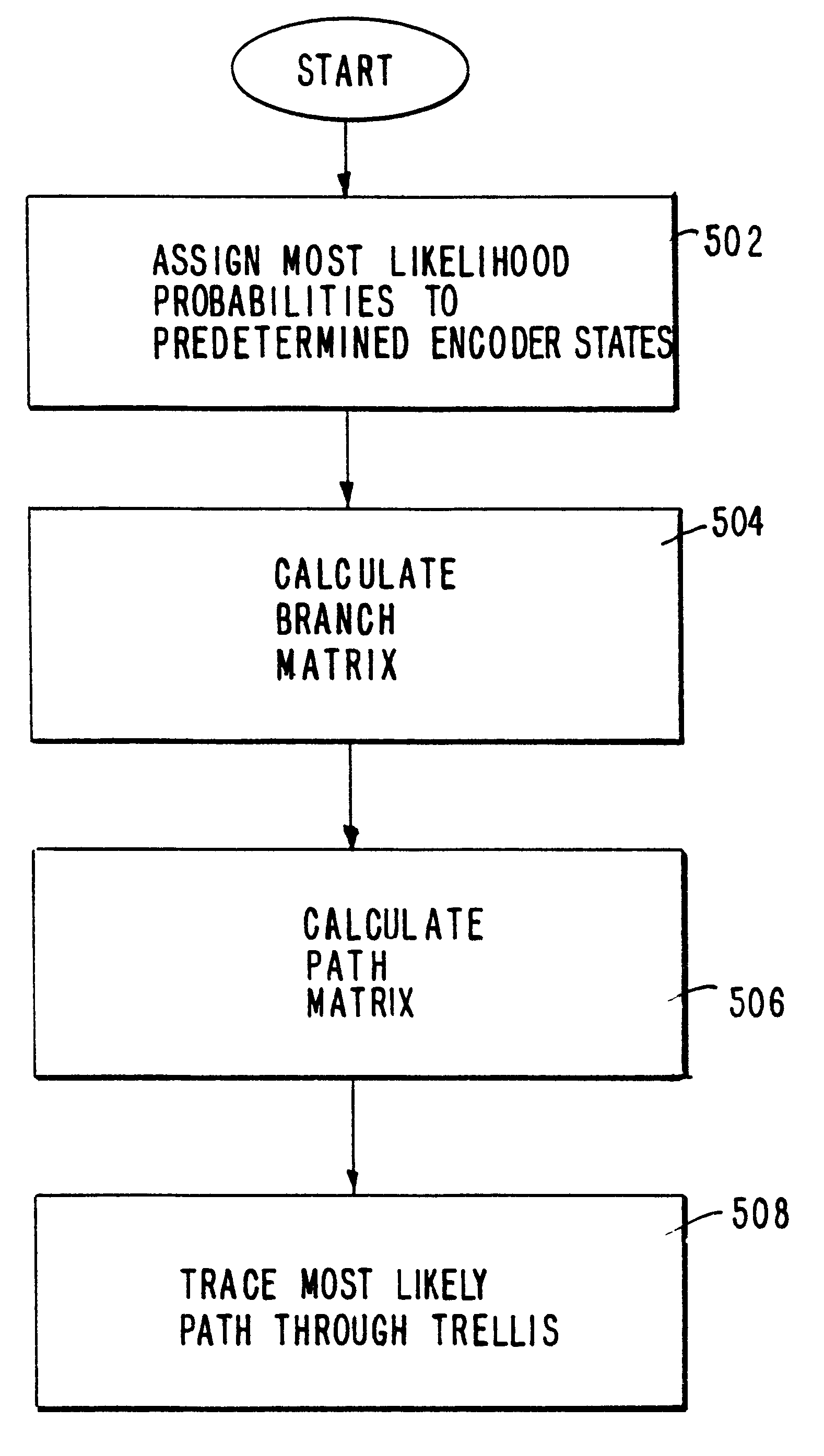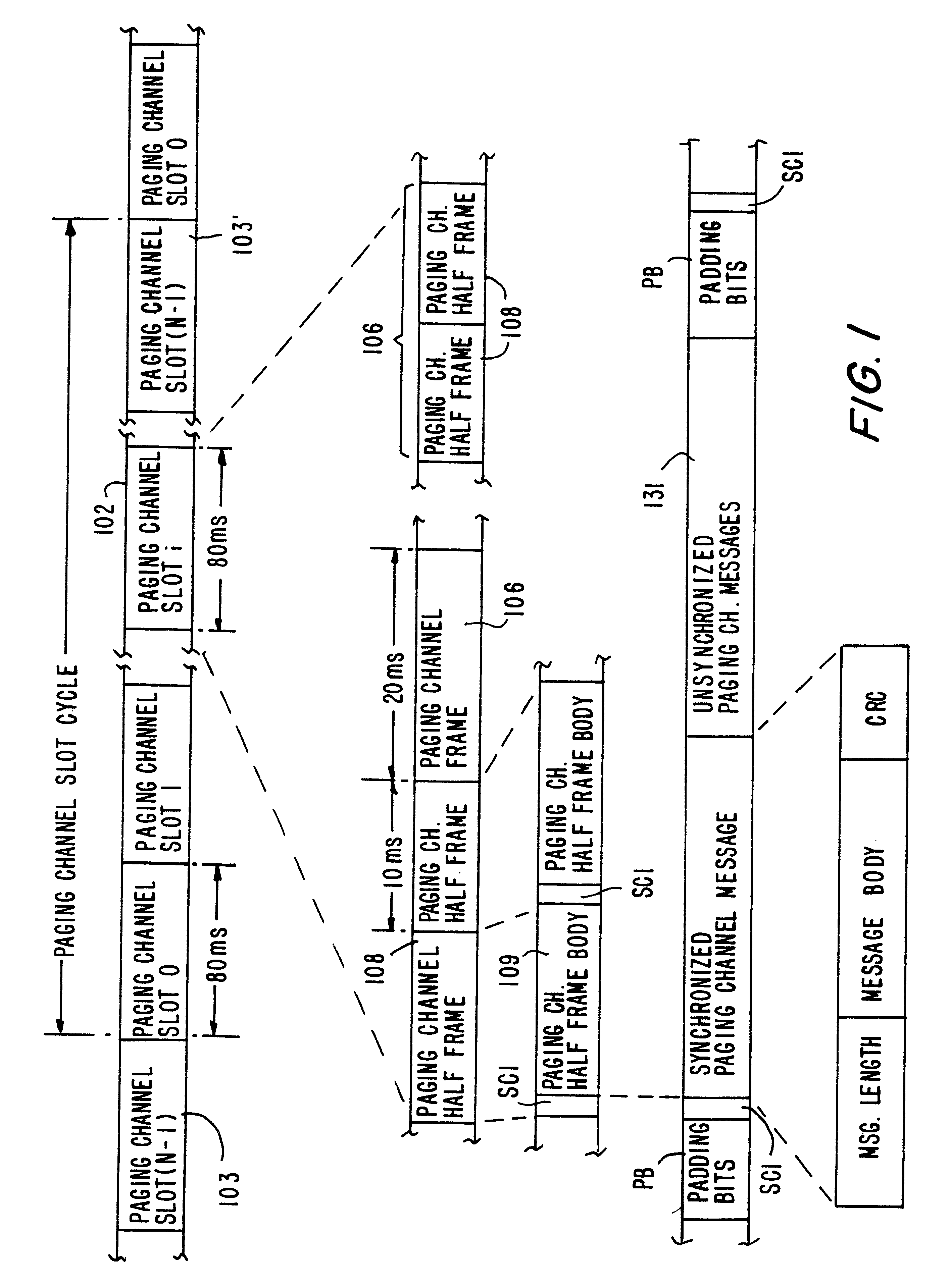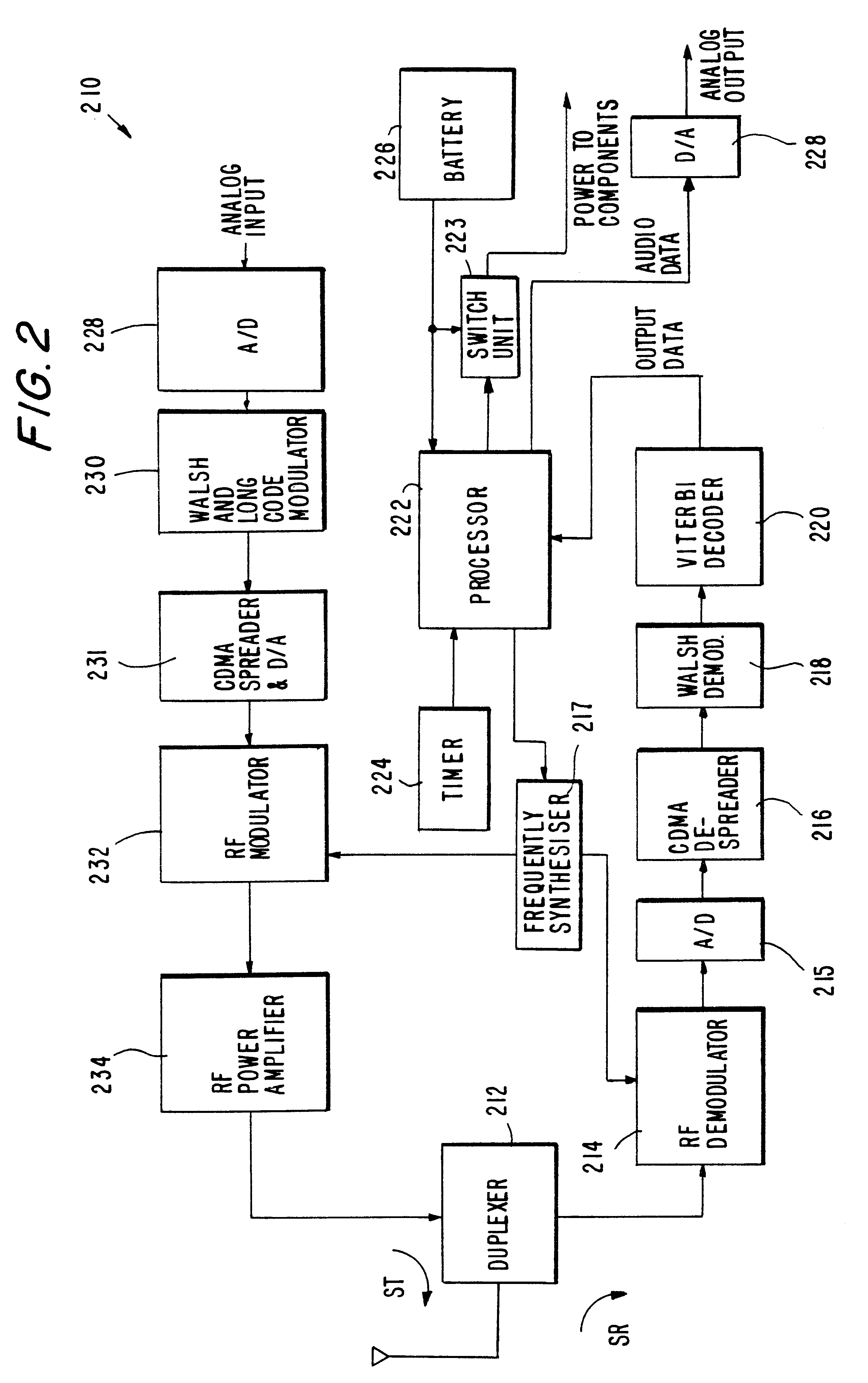Method and apparatus for decoding continuously coded convolutionally encoded messages
a convolutional encoded and encoded technology, applied in the direction of coding, amplitude demodulation, code conversion, etc., can solve the problem of reducing the probability of errors upon receiving the message, the encoder being in an all-zero state with only four consecutive zeros guaranteed, and the message error probability of this approach is unacceptable in the range of 15 to 25%. , to achieve the effect of reducing power consumption
- Summary
- Abstract
- Description
- Claims
- Application Information
AI Technical Summary
Benefits of technology
Problems solved by technology
Method used
Image
Examples
Embodiment Construction
An illustrative embodiment of the invention will now be described in detail with particular reference to decoding messages transmitted within a CDMA paging channel. Although the invention has particular utility for this application, it is not limited thereto. Decoders in accordance with the invention and their method of operation may be employed to decode convolutionally encoded messages transmitted in other wireless or wireline communication systems, such as time domain multiplexed (TDM) and / or frequency division multiplexed (FDM) systems.
Referring now to FIG. 1, a paging channel message structure in accordance with an embodiment of the invention is illustrated. The shown message structure is similar to that required by the IS-95-A standard, but with one key difference--a predetermined sequence of padding bits PB are inserted prior to a Synchronized Capsule Indicator (SCI) bit whenever a synchronized message is to immediately follow. These padding bits are required to implement dec...
PUM
 Login to View More
Login to View More Abstract
Description
Claims
Application Information
 Login to View More
Login to View More - R&D
- Intellectual Property
- Life Sciences
- Materials
- Tech Scout
- Unparalleled Data Quality
- Higher Quality Content
- 60% Fewer Hallucinations
Browse by: Latest US Patents, China's latest patents, Technical Efficacy Thesaurus, Application Domain, Technology Topic, Popular Technical Reports.
© 2025 PatSnap. All rights reserved.Legal|Privacy policy|Modern Slavery Act Transparency Statement|Sitemap|About US| Contact US: help@patsnap.com



